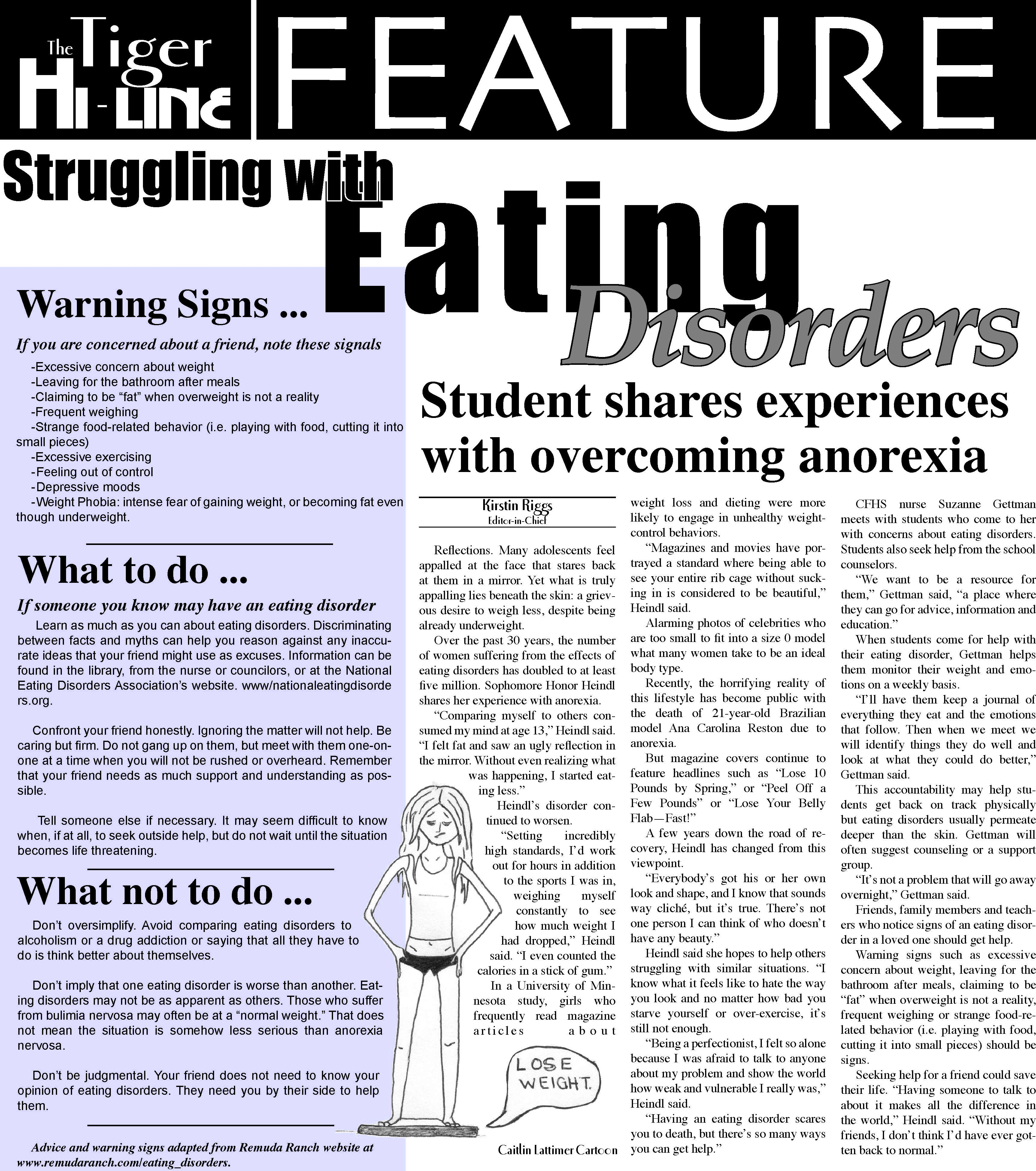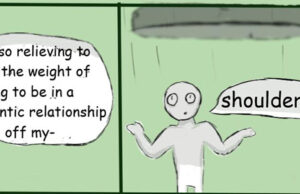Student shares experiences with overcoming anorexia
By Kirstin Riggs 2007
Reflections. Many adolescents feel appalled at the face that stares back at them in a mirror. Yet what is truly appalling lies beneath the skin: a grievous desire to weigh less, despite being already underweight.
Over the past 30 years, the number of women suffering from the effects of eating disorders has doubled to at least five million. Sophomore Honor Heindl shares her experience with anorexia.
“Comparing myself to others consumed my mind at age 13,” Heindl said. “I felt fat and saw an ugly reflection in the mirror. Without even realizing what was happening, I started eating less.”
Heindl’s disorder continued to worsen.
“Setting incredibly high standards, I’d work out for hours in addition to the sports I was in, weighing myself constantly to see how much weight I had dropped,” Heindl said. “I even counted the calories in a stick of gum.”
In a University of Minnesota study, girls who frequently read magazine articles about weight loss and dieting were more likely to engage in unhealthy weight-control behaviors.
“Magazines and movies have portrayed a standard where being able to see your entire rib cage without sucking in is considered to be beautiful,” Heindl said.
Alarming photos of celebrities who are too small to fit into a size 0 model what many women take to be an ideal body type.
Recently, the horrifying reality of this lifestyle has become public with the death of 21-year-old Brazilian model Ana Carolina Reston due to anorexia.
But magazine covers continue to feature headlines such as “Lose 10 Pounds by Spring,” or “Peel Off a Few Pounds” or “Lose Your Belly Flab—Fast!”
A few years down the road of recovery, Heindl has changed from this viewpoint.
“Everybody’s got his or her own look and shape, and I know that sounds way cliché, but it’s true. There’s not one person I can think of who doesn’t have any beauty.”
| Heindl said she hopes to help others struggling with similar situations. “I know what it feels like to hate the way you look and no matter how bad you starve yourself or over-exercise, it’s still not enough.
“Being a perfectionist, I felt so alone because I was afraid to talk to anyone about my problem and show the world how weak and vulnerable I really was,” Heindl said.
“Having an eating disorder scares you to death, but there’s so many ways you can get help.”
CFHS nurse Suzanne Gettman meets with students who come to her with concerns about eating disorders. Students also seek help from the school counselors.
“We want to be a resource for them,” Gettman said, “a place where they can go for advice, information and education.”
When students come for help with their eating disorder, Gettman helps them monitor their weight and emotions on a weekly basis.
“I’ll have them keep a journal of everything they eat and the emotions that follow. Then when we meet we will identify things they do well and look at what they could do better,”
Gettman said.
This accountability may help students get back on track physically but eating disorders usually permeate deeper than the skin. Gettman will often suggest counseling or a support group.
“It’s not a problem that will go away overnight,” Gettman said.
Friends, family members and teachers who notice signs of an eating disorder in a loved one should get help.
Warning signs such as excessive concern about weight, leaving for the bathroom after meals, claiming to be “fat” when overweight is not a reality, frequent weighing or strange food-related behavior (i.e. playing with food, cutting it into small pieces) should be signs.
Seeking help for a friend could save their life. “Having someone to talk to about it makes all the difference in the world,” Heindl said. “Without my friends, I don’t think I’d have ever gotten back to normal.”










You must be logged in to post a comment Login